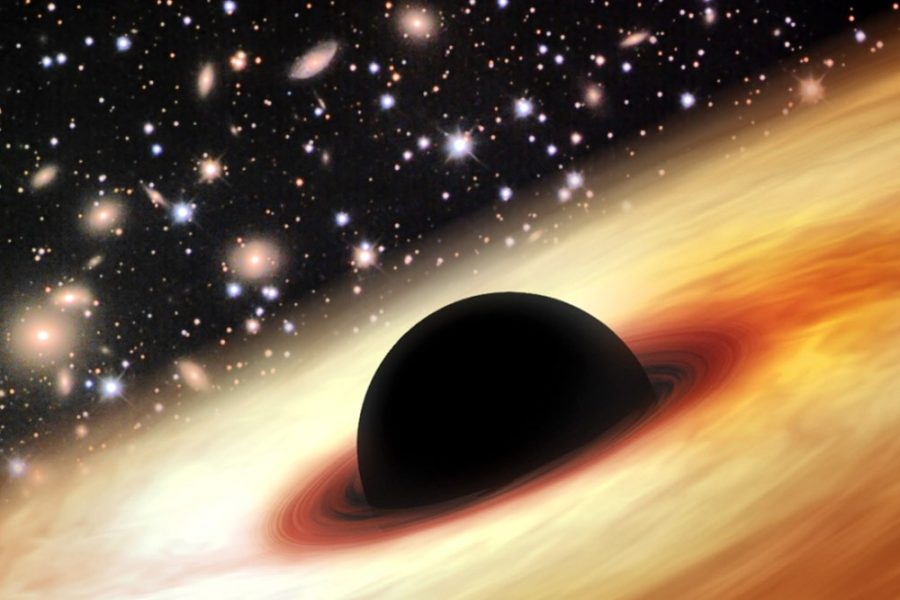Peering into the infancy of the universe, astronomers have recently discovered the largest and brightest quasar powered by a central black hole with a mass of 12 billion suns. To put this into perspective, the black hole at the center of the Milky Way has a mass of only 4 million suns, which is 3,000 times smaller. The finding was published in the scientific journal Nature by astronomers from Peking University in China and the UA.
“A quasar is a galaxy with a very massive black hole at the center,” explained Xiaohui Fan, regents’ professor of astronomy at the Steward Observatory. “Black holes exhibit such a strong gravitational pull that they are always sucking matter into themselves, and even light cannot escape from inside the black hole. During this process, black holes release a lot of energy from the collision of gases and stars, so a lot of light is being emitted just before it disappears into the black hole.”
Fan, who co-authored the study, explained that it takes time for light to arrive to the Earth, as light travels at 186,000 miles per second. Thus, seeing objects from far away also means seeing them at their early stage in the universe.
The quasar, named SDSS J0100+2802, is at a distance of 12.8 billion light years away and formed only 900 million years after the Big Bang. There are only 40 other known quasars from such an early time of the universe. This factor, paired along with the luminosity of the quasar being that of 420 trillion suns, is surprising to astronomers.
“What we discovered is that the brightest object in the early universe also contains the most massive black hole ever detected at that time,” Fan said. “The surprising part is how can the universe, in a relatively short period of time by astronomical standards, produce such a massive and bright object? It’s like observing an infant that turns out to be the size of a giant. It is not clear how that could happen.”
The quasar was first discovered by the 2.4-meter Lijiang Telescope in Yunnan, China, using digital mapping of the sky and infrared imaging from NASA satellites. Pursuing the discovery further, UA astronomers used the 8.4-meter Large Binocular Telescope on Mount Graham and the 6.5-meter Multiple Mirror Telescope on Mount Hopkins in Southern Arizona for data collection.
Fan said he is excited to learn what the newly discovered quasar will reveal about the environmental conditions of the early universe.
“What we have discovered is an object that defies our expectations based off of our standard theory on how these black holes occur in the universe,” Fan said. “It is the brightest beacon from the early universe, and from it, you can see the conditions of the universe, whether it was cold or hot, had small or big galaxies, that sort of thing.”
_______________
Follow Kimberlie Wang on Twitter.









